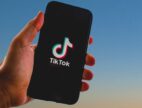5 Key Metrics For a Successful Social Media Campaign
by Abdul Aziz Mondal social media Published on: 03 August 2022 Last Updated on: 08 May 2025

Running a social media campaign is more demanding than ever. Competing with other businesses without shattering your budget is challenging.
Newbies running social media campaigns need to think about how to interpret the mass amount of data received after the conclusion of a campaign. Of course, every piece of data has a story to tell, but what key metrics should you be following?
Here’s everything you need to know about the five top metrics every business should follow for their social media campaigns.
What are Social Media Metrics?
Social media metrics are a measure of something. They measure various aspects of your social media activity.
For example, your click rate is the number of people who click on your link compared to the number of people who could have clicked on your link.
Measuring the right metrics is as critical to your social media success as measuring metrics entirely. Not being able to spot the trends and patterns within the data leaves you with a congenital disadvantage from day one.

1. Volume
The first and most obvious metric to follow is volume. With 4.62 billion people on social media in 2022, more than half of the world’s population, you have a tremendous number of potential eyeballs.
Volume is an initial indicator of how much people are interested in you. While it cannot tell you anything about customer reactions, volume is important because people do not talk or interact with the names and faces they don’t care about.
Some social media strategists may dismiss volume as nothing more than a counting metric, but it has more value than people think. Tracking those numbers over time can demonstrate where the outer boundaries of your brand’s influence lay.
Facebook Insights also has a similar metric called “People Talking About This, which shows the number of unique people who posted something about your brand on their walls.
You can also dig further into your volume numbers to spot trends and patterns. For example, if the volume is higher on a particular day or a certain hour, you can use that information to create and publish more potent content.
2. Reach
Reach is a measure of the spread of a social media topic. Reach gives you context for your content. It answers questions like how big the potential audience is for your message and how far your content is reaching.
Reach alone will not tell you everything. It is a predictor of conceivably how far your message could be spread. It does not mean everyone within that pool will come into contact or take an interest in your content.
You can also use reach to work out another metric that may not appear automatically on your social media dashboard: engagement percentage.
Choose a meaningful action, such as clicks, likes, or shares, and divide them by your total reach to get your engagement percentage. Higher engagement percentages indicate you are targeting the right audience.
3. Engagement
The engagement metrics account for any action that involved interacting directly with your content, whether a blog or a social media feed ad.
It includes clicks, shares, comments, and more. Engagement identifies potential prospects and super fans. It is also the most effective way of advertising your brand because it is trustworthy, gets the job done, and costs you nothing.
Tracking all forms of engagement is vital for monitoring the success of your content marketing campaign on social media. More engagement means you are reaching your audience. It will also typically mean better rankings in social media feeds and even Google itself.
Engagement metrics can act as a waypoint to which content types generate the most engagement. Pay attention to what’s generating the most activity. You may be surprised at what people choose to interact with.
4. Influence
Influence is the most talked about metric in the social media marketing community. With the rise of influencer marketing, which now has a value of $16.4 billion in 2022, businesses want to know who is talking about them.
It remains the most controversial social media metric because so many ways to measure influence lead to different results. However, the one thing everybody agrees on is that audience size is not the same thing as an influence.
Past actions indicate how influential someone can be in the future. Potential influence helps decision-makers know who to reach out to when preparing a social media push.
Plenty of tools will assign an influencer score based on factors like a person’s social media following and the actions they have taken in the past.
Influence is handy when searching for brand advocates who can fly your flag on your behalf.
5. Share of Voice
The share of voice metric is one such metric that traditionally gets little attention from the average social media marketer. Many experienced marketers are unaware of what share of voice even is.
Using this metric allows you to compare the value of the conversations people are having about your brand with those same conversions people are having about your competitors. For example, how much of the overall industry are you nominating?
Measuring your share of voice will also help you figure out what your competitors are doing. Then, monitor their successes and uncover the principles you can apply to your marketing campaigns.
The chances are your competitors are also comparing their conversations with your own, so make sure share of voice is one of the five essential metrics you keep track of.
Conclusion
Social media marketers and entrepreneurs can quickly find themselves drowning under various metrics. Unfortunately, getting too involved in the data can be just as bad as not examining data at all.
Identify the metrics that pertain most to your brand and concentrate on them. Setting your core metrics early allows you to cut through the noise and take advantage of real-time insights into your business.
What are you doing to increase the effectiveness of your social media campaigns?
Additionals:



































































































